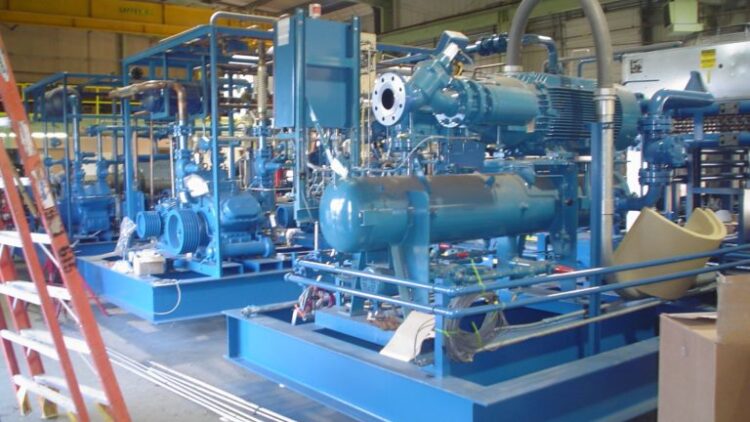Refrigeration: Understanding The Refrigeration Evaporators And Their Importance!
In any industrial market, various components and equipment play an essential role in making different tasks easy. One of them is wastewater evaporation techniques, and it is one of the easiest & most significant ways to reduce wastewater reduction. Some evaporations technologies help in recovering valuable water and their separation from hazardous material.
Evaporation is considered as another way of treatment of wastewater. It can help eliminate heavy metals, salts, and various other components with its best solutions. We should always prioritize water conservation; therefore, our equipment efficiently produces high-quality and reusable distillate. Most technology such as refrigeration evaporators applications also makes a high-quality, reusable distillate-a significant feature where water conservation is a priority.
Wastewater Evaporation Applications
Reducing groundwater water levels and drainage associated fees to wastewater treatment denial would greatly help industrial wastewater filtration plants. The Enhanced Evaporation wastewater evaporators run at the lowest kilowatt per gallon of evaporated water, bringing savings back to the treatment facility, from industrial process water to food processing or agriculture.
Industrial Refrigeration Basics
Modern refrigeration measures are utilized in significant industries, from assembling and innovation to food and chemicals. Additionally, industrial refrigeration is a substantial piece of any cycle where low temperatures should be kept up for cold stockpiling. Simultaneously, process chillers have a significant impact on mechanical cooling.
Before plunging into the particulars, it is a great idea to comprehend fundamental refrigeration measures. These incorporate the refrigeration cycle interaction and how it transports heat energy starting with one spot then onto the next. Another thing to understand is the vital parts of all refrigeration frameworks.
By its basic definition, refrigeration is the way toward eliminating heat from a material, substance, or space. With mechanical cycles, measure chillers are utilized to stop heat from a particular interaction or material. The chillers use a refrigeration circuit utilizing either a fume pressure or assimilation framework to cool or dehumidify the air.
There are four critical parts in any refrigeration framework:
- Evaporators
- Compressor.
- Condenser.
- Expansion valve.
During the refrigeration circuit, the refrigerant goes through a blower. The blower is the core of any framework and is usually controlled by an electric engine. This interaction hoists the critical factor of the refrigerant.
From the blower, the refrigerant moves through a condenser. In the condenser, it changes from fume structure to fluid-structure and oozes heat. For air-cooled measure chillers, the fume is at a higher temperature than the air passing across the condenser.
After the refrigerant goes through the condenser, it travels through the development valve (also referred to as a metering tool) and drops in the critical factor.
The last step? The refrigerant moves to the evaporator, drawing heat and making it disintegrate. The evaporator jerks heat from the territory that should be cooled. At that point, the refrigerant moves back to the blower, and the cycle begins once more.
There are other equipments used with industrial refrigerator process, and These may include:
- Liquid receiver: These are units situated close to the condensers that get and store the refrigerant charge.
- SuctionTrap: The pull trap keeps fluid refrigerant from entering the blower. It generally is situated close to the evaporator and blower.
- Low Pressing factor Receiver: The humble pressing factor recipient helps separate fluid from fume, essentially utilized in fluid overload frameworks.
Wastewater Evaporator Technologies
Heating source, circulation system, and heat exchanger systems describe evaporators. Hot water, steam, heat fluids, flue gases, and electrical power will provide the heating source for evaporation-either directly by resistance or indirectly through a heat pump or mechanical vapor recompression. There are various types of waste water evaporation techniques; some of them are as follows:
Atmospheric Evaporation
This is one of the most comfortable designs of evaporation. Direct heat is applied at atmospheric pressure like steam or combustion to boil the water in this process.
Heat Pump Vacuum Evaporation
The warmth siphon vacuum evaporator offers decreased electrical energy utilization and better dependability for low than medium stream delivered water treatment applications. The more significant part of the energy as dormant warmth is reused for new fume creation. Electrical energy utilization essentially relies upon the work needed to pack the moderate liquid, and to a small degree, fans to help the air-cooling measure.
Mechanical Vapor Recompression (MVR)
The reduced energy consumption of MVR evaporators makes it possible to treat medium to high flow wastewater treatment applications where there is no excess or waste of hot water/steam and cooling water.
Choose the right wastewater evaporation techniques.
Sep-Pro Systems is a moderate-sized organization devoted to meeting our clients’ particular requirements in the planning, designing, and manufacturing of oil and gas preparing gear. Situated in new and extended offices in Houston, we offer our domestic and overseas customers the adaptability to meet their specific interaction framework needs inside their mentioned plans while emphasizing customized client care and backing. Whether it is refrigeration evaporators or vapor recovery systems, we have various other plant systems. Call us today and meet your industrial needs with the latest and modern equipment.

